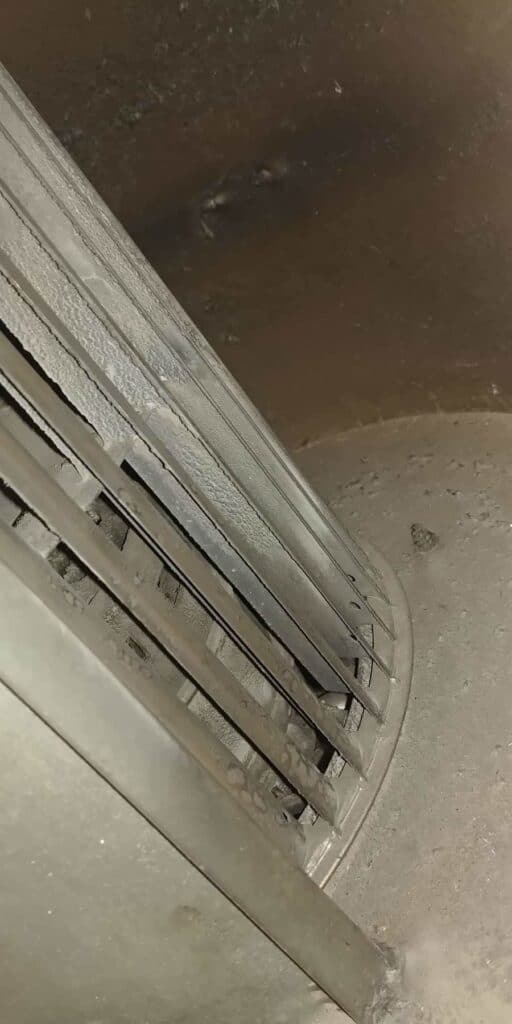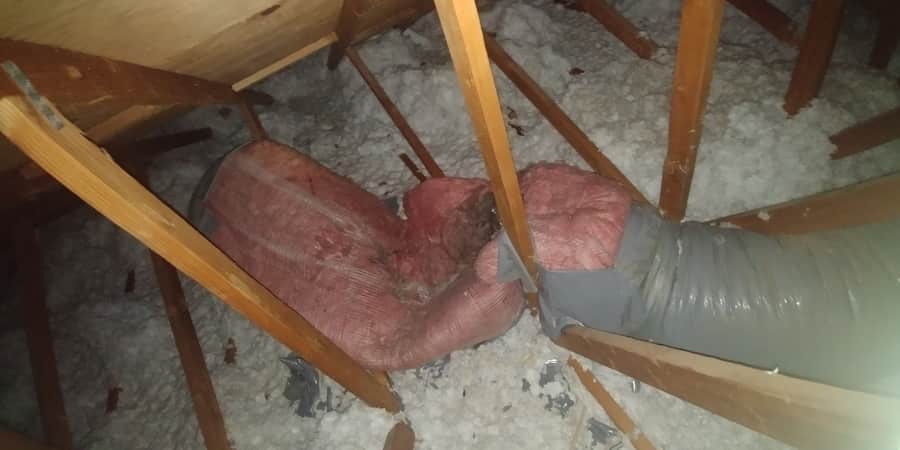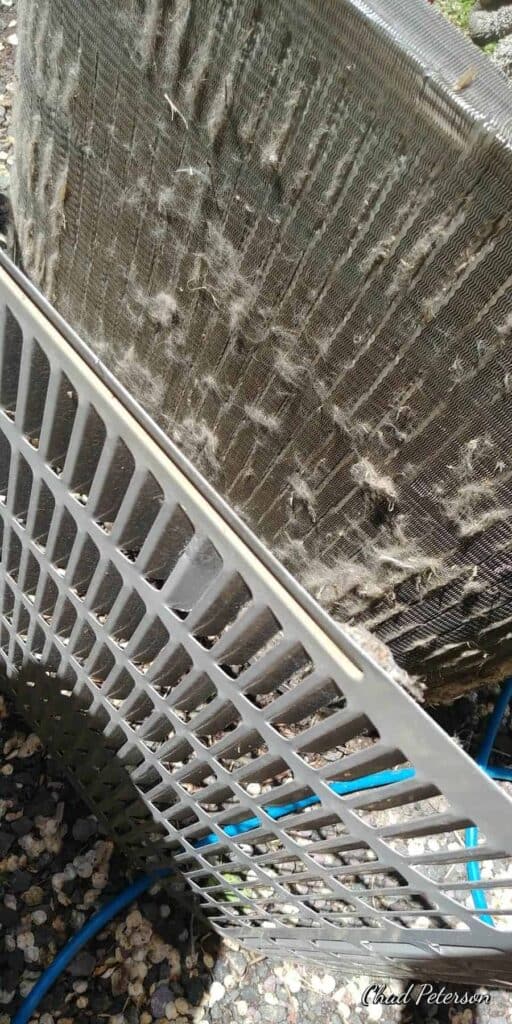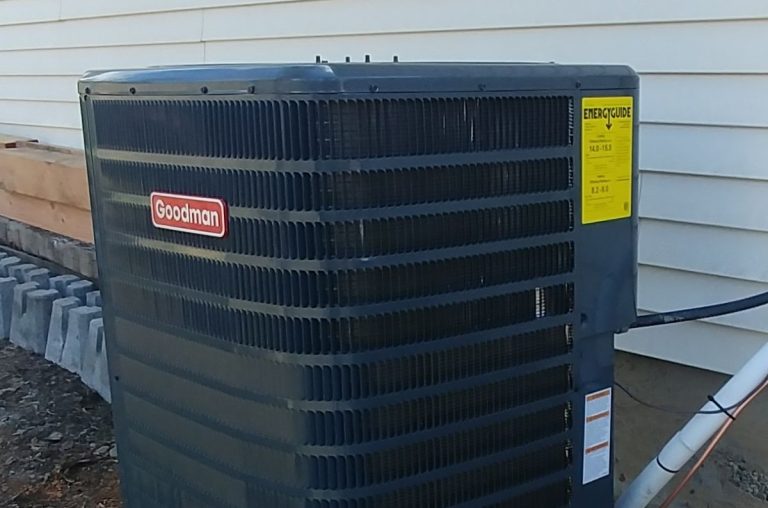Most Common Problems With Heat Pumps
Last Updated on May 14, 2025 by Chad Peterson
Early in my schooling as an HVAC technician, they drilled into my head that the three most common problems with heat pumps are airflow, airflow, and airflow.
If you had the proper airflow in the beginning, when your heat pump was installed, then troubleshooting is much simpler. The primary factors that contribute to poor airflow in any forced air system are insufficient ductwork, poor filtering, and lack of proper maintenance.
This is an affiliate site. I offer you products that relate to this article. You can click on the links without fear of spending money unless you have no self control.
A blower wheel that has collected a layer of dust can lose efficiency gradually as the dust thickens. Dust and debris collecting on a blower wheel commonly cause airflow problems. Blower wheels have to be removed and taken apart to be cleaned properly.

A sort of hidden cause of limited airflow and one that is neglected by not only homeowners but also service technicians are indoor coils. This is the coil in or next to your furnace or air handler.

Not only is the stuff on the coil limiting the airflow, but the fins are also smashed in somewhat, which will add to the lack of air going through the coil. These smashed fins can be straightened easily with a fin comb. Coils need to be cleaned chemically.
These two previous images reflect poor filtering and a general lack of maintenance. Even good filtering doesn’t eliminate good periodic maintenance. Stuff gets through the really good filters. It’s just smaller particles that will collect on the fan and coil over time.
You can learn more about picking out a good filter in a post I wrote some time ago.
One Of The Common Problems With Heat Pumps Is Flex Duct

This customer had two of these return ducts in his attic. Losing one duct to cats in the attic didn’t cause him to suspect something was wrong, except for some high electric bills. Hot attic air in the summer and cold attic air (and insulation) in the winter is being sucked into the furnace, making it work much harder to heat or cool the home.
The one still functioning duct had a dirty filter (filter grill in the ceiling), and the other had a perfectly clean filter, which gave me enough suspicion to look in the attic. Animals destroying ductwork is not an uncommon problem and dramatically affects airflow.
Heat Pump Icing Up Outside In Winter
Still another of the common problems with heat pumps is outdoor coils that build up too much ice in winter. You could describe a heat pump as being a reverse air conditioner. The cold coil in the summer is the indoor coil, and the cold coil in the winter is the outdoor coil.
These coils reverse themselves or their functions because the refrigerant in the piping is flowing through a reversing valve.
Because the outdoor coil in the winter is the cold coil, it tends to ice over. This icing is natural, and a circuit board in the heat pump’s control box has a timer to reverse the heat pump to make the outdoor coil the hot coil to defrost the coil.
The timer or the sensors that control the timer can fail. If ice is allowed to form continually without proper defrosting, it can damage the coil’s fins and tubing.

Ice can be a very powerful force. Continual icing on this heat pump crushed the tubing, and all the refrigerant leaked. That’s to say, nothing about the restriction created before it leaked. Heat pumps can be deceiving. You can think they are working because everything is running, but they can run poorly.
Heat Pump Indoor Coil Icing Up In The Summer
A lack of airflow can cause iced-up indoor or outdoor coils, especially if your heat pump is low on Freon or refrigerant. Refrigerant would be how to refer to that freaky frost stuff inside the piping of heat pumps and air conditioners.
If your heat pump is older, it could be filled with R-22, but if it’s a newer model, it’s probably R-410A. When a refrigeration system, which is a heat pump, becomes low on refrigerant, icing may occur.

If allowed to continue, the melting ice can damage floors and foundations. I replaced a lot of furnaces after a restoration company replaced all the flooring because a coil leaked and went unnoticed.
Your Outdoor Heat Pump Unit Needs Good Air Flow Also
Remember the need for airflow? Outdoor coils need proper airflow also. The culprits that clog outdoor coils are the things common to your area. Trees and shrubs that fill the air get sucked into the coils. The finned covers over some coils make it a little hard to notice.

One thing to be aware of when inspecting outdoor coils is that some of these coils are assembled in two layers. You look at the inside and the outside, and they appear clear of debris, but if you lift the top off the heat pump, there could be two coils, one inside the other. The gap between the two coils could be packed with whatever flies around your neighborhood.
Heat Pump Thermostat Wiring With Emergency Heat
Updating a thermostat can be well worth the money and maybe even offer a return on your investment. For sure, your heat pump will work better. Old-style technology would poorly govern the emergency heat of the heat pump system. An outdoor thermostat would turn on the emergency heat (the heat strips in your furnace) upon a call for heat at a set outdoor temperature—usually about 35 degrees.
So even if the heat pump could heat the home on its own, you were paying more for electricity than needed. The actual set point was rarely determined correctly. New thermostats are more computer-driven or oriented. They know when a heat pump can’t keep up and will turn on the strip heat when the outdoor unit cannot maintain your set temperature.
I have a favorite thermostat. It requires none of the nuisance batteries to change or leak all over inside the thermostat. Completely programmable or non-programmable and will operate any system. Made by Honeywell it comes with WIFI and can be remotely adjusted from anywhere you have a cell phone connection.
Nearly all of those primitive outdoor thermostats that were to control the emergency heat don’t work anyway. They are either stuck on or off. I tried to isolate these problems specific to heat pumps. Some issues like bad capacitors or low Freon charge are common to all HVAC units.
Why Do Most Heat Pumps Fail At The Beginning Of Summer?
Because homeowners have been warm all winter heating with the electric furnace that supplements the heat pump, the heat pump actually failed much earlier, but the house stayed warm with the furnace’s strip heaters.
Then when it came time to turn on the cooling portion of the heat pump on the first hot day, it appeared to be broke—another reason to be aware of how things work or have a yearly maintenance.
The best time to do that maintenance is early fall when you still have some warm days. Why would that be so important? The correct refrigerant charge in a heat pump is determined on a warm day. Charging a heat pump in winter is problematic. It can be done, but not as accurately as in the summer.
Conclusion To The Most Common Problem With Heat Pumps
When maintenance is neglected it leads to those three most common problems with heat pumps. Not enough air flow.
Nothing can beat proper maintenance. The difficulty lies in knowing what a technician does to perform that maintenance. You know something now that most people do not. Those coils need to be properly cleaned. The blower wheel should not be impacted by dust and dirt.




